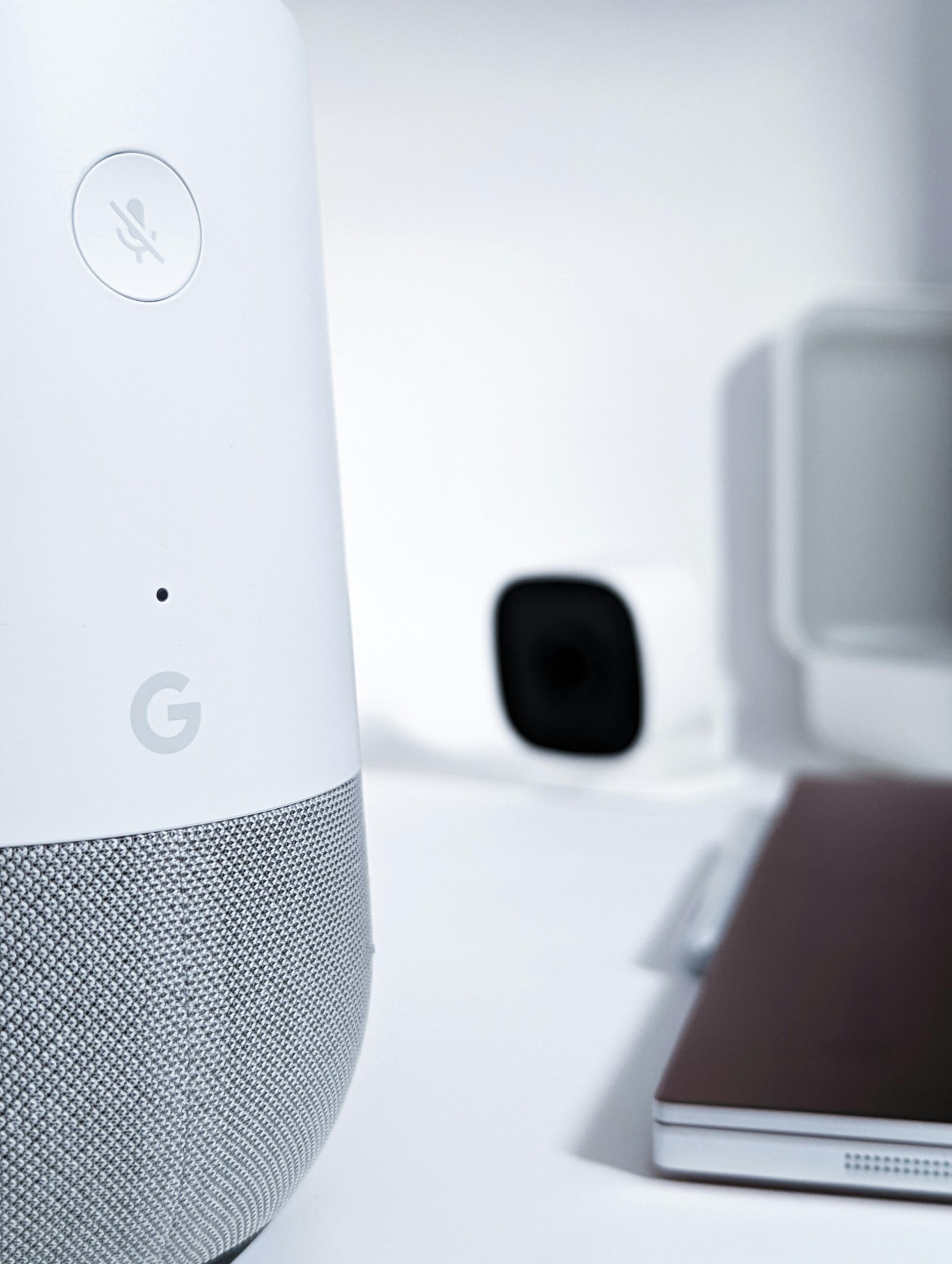Is Google News the future of digital publishing? This question has sparked intense debates among content creators, publishers, and tech enthusiasts worldwide. As the digital landscape rapidly evolves, Google News platform emerges as a powerful player reshaping how news and information are consumed online. But what makes Google News stand out, and could it truly be the ultimate game-changer in digital content distribution? In this article, we dive deep into the fascinating world of Google News, uncovering why it might just be the future of online publishing and news aggregation.
With the rise of AI-driven news algorithms and personalized content delivery, Google News is revolutionizing the way publishers reach their audience. Unlike traditional publishing models, Google News offers instant access to a vast array of news sources, making it easier for readers to find relevant and trustworthy information. However, some experts argue that it also poses challenges for smaller publishers trying to compete in this crowded digital space. Will Google News monetization strategies and its evolving content ranking system help or hinder the growth of independent journalism? You won’t wanna miss our thorough exploration of these hot topics!
Curious about how Google News SEO optimization can boost your website traffic or how this platform adapts to the ever-changing digital publishing trends? Stay tuned as we uncover the secrets behind Google News’ success and its potential to dominate the future of digital media distribution. Whether you’re a seasoned publisher or a casual reader, understanding the impact of Google News on the publishing industry is more crucial than ever. So, is Google News really the future of digital publishing? Discover now!
How Google News Is Revolutionizing Digital Publishing in 2024: Top Trends to Watch
How Google News Is Revolutionizing Digital Publishing in 2024: Top Trends to Watch
In the world of digital marketing, things change fast. One platform that have been making big waves lately is Google News. Since its launch in 2002, Google News has evolved a lot but in 2024, it’s stepping up the game like never before. For local businesses and digital marketing companies in New York, understanding how Google News is reshaping digital publishing is crucial. So, is Google News the future of digital publishing? Let’s dive deep and find out!
The Rise of Google News: A Brief History
Google News started as a simple news aggregator. It collected stories from lots of news sources and showed them in one place. This was great because users could find multiple perspectives on a story quickly. Over the years, Google News added features like personalization, local news, and video content. But, now in 2024, it’s moving beyond just aggregation.
Some key milestones in Google News history:
- 2002: Launched with about 4,000 news sources.
- 2006: Introduced personalized news based on user interests.
- 2018: Rolled out AI-powered story clustering for better news organization.
- 2023: Launched Google News Showcase, partnering directly with publishers.
- 2024: Focus on real-time updates, multimedia, and local news integration.
Why Google News Matters More Than Ever in 2024
For digital publishers, Google News is not just a traffic source anymore, it’s a platform that influence how news is created, distributed, and consumed. Here’s why it stands out in 2024:
- Real-time Updates: News stories get updated instantly, keeping readers informed with the latest info.
- Personalization Algorithms: Google uses AI to tailor news feeds based on reading habits, location, and preferences.
- Multimedia Integration: Videos, podcasts, and images now appear alongside articles, making news more engaging.
- Local News Boost: Emphasis on local stories helps small publishers reach their community better.
- Fact-Checking and Credibility: Google News highlights verified sources, combating misinformation.
Top Trends To Watch In Google News 2024
If you’re a digital marketer or publisher wanting to stay ahead, keep an eye on these trends:
AI-Driven Content Curation
Google News uses machine learning models to understand what readers want, showing them relevant news faster than ever before. Publishers who adapt their content to these AI signals stand to gain more visibility.Enhanced Multimedia Storytelling
Text-only articles are becoming less popular. Google News now promotes articles with embedded videos, slideshows, and audio clips. This helps publishers create richer user experiences.Local News Hyper-Personalization
In 2024, Google News is pushing local content hard. For example, a New York-based company can appear more prominently in searches related to NYC events, politics, or business news.Subscription and Paywall Integration
Google News continues to refine ways for publishers to monetize content directly through subscriptions or memberships, making it easier for smaller outlets to thrive.Interactive and Immersive Content
Augmented reality (AR) and virtual reality (VR) are slowly entering newsrooms. Google News is testing ways to feature these immersive stories in their feed.
Is Google News The Future Of Digital Publishing? A Comparison
To understand if Google News really is the future, let’s compare it with traditional digital publishing methods:
| Feature | Traditional Digital Publishing | Google News 2024 |
|---|---|---|
| Content Discovery | Relies on SEO and direct visits | AI-powered personalized feeds |
| Traffic Generation | Organic and paid traffic | Integrated with Google Search & AI |
| Monetization | Ads, subscriptions, sponsorships | Subscription integration, ads, partnerships |
| Content Format | Mostly text and images | Multimedia, interactive, AR/VR-ready |
| Local Focus | Variable, often limited | Strong local news emphasis |
| Speed of Updates | Depends on publisher | Near real-time content updates |
| Credibility & Fact-Checking | Variable, publisher-dependent | Google verifies and promotes credible sources |
From this comparison, you can see Google News offers publisher a lot of tools and opportunities that traditional platforms can’t match easily. However, it also means publishers need to adapt their strategies to fit into Google’s ecosystem.
Practical Examples: How Local Businesses and Publishers Can Leverage Google News
For digital marketing companies in New York, Google News is a goldmine if used right. Here’s how you can benefit:
- Local Event Coverage: Cover local events or news and submit your story to Google News to attract local readers.
- **Use Multimedia Content
7 Powerful Reasons Why Google News Could Be the Future of Online News Distribution
In the ever-shifting world of digital publishing, Google News have been making waves like never before. Many marketers, publishers, and readers are asking themselves, “Is Google News the future of digital publishing?” and “Why it could change the way online news get distributed?” The answer, well, it’s more complex and exciting than you might think. Google News, launched in 2002, has evolved from a simple news aggregator to a powerful tool that could redefine how news reaches audiences across the globe, especially in bustling cities like New York. Let’s dive into seven powerful reasons why Google News might be the future of online news distribution.
1. Massive Reach and Instant Accessibility
Google News taps into Google’s vast search engine infrastructure, meaning news from thousands of publishers get displayed to users worldwide almost instantly. This reach is something traditional news outlets can only dream of. Imagine a small New York-based digital marketing company publishing a local story; through Google News, this story could appear alongside major national media, giving it exposure that was previously impossible.
Because it’s integrated with Google Search, users don’t have to visit multiple sites to get their news – everything is delivered in one place. This convenience is a huge factor driving its popularity.
2. Personalized News Experience
Unlike traditional newspapers that delivers the same news to everyone, Google News uses algorithms to customize news feeds based on user preferences and reading habits. This means every user get a unique news experience, making it more engaging. For publishers, this personalization means their content has better chances to meet the right audience.
Practical example: If someone in New York is interested in tech startups, Google News will prioritize stories from local tech companies or events, rather than generic news unrelated to their interests.
3. Real-time Updates and Diverse Sources
One of the biggest advantages Google News have is the ability to provide real-time updates from a wide variety of sources. This diversity means readers get multiple perspectives on the same story, aiding in more balanced understanding. For publishers, it forces a higher standard of accuracy and speed, since outdated or incorrect news quickly lose visibility.
Historical context: Before platforms like Google News, people mainly rely on single sources or scheduled broadcasts, which could delay news dissemination by hours or days.
4. Monetization Opportunities for Publishers
Google News isn’t just beneficial for readers; it also creates new revenue streams for publishers. Through programs like Google News Showcase and AdSense integration, publishers can earn money based on traffic and engagement. This helps smaller publishers, including local digital marketing firms in New York, to sustain content creation without relying solely on ads or subscriptions.
Consider this listing of monetization options:
- Google News Showcase payments for curated content
- Ad revenue from Google AdSense
- Increased traffic boosting subscription sales
- Sponsored content placement opportunities
5. Enhanced SEO Benefits
Because Google News is tightly integrated with Google’s search ecosystem, publishing news through it can significantly improve SEO rankings. News stories indexed on Google News often appear in prominent search result features like Top Stories carousels, which dramatically increase visibility and click-through rates.
For any local digital marketing company, mastering Google News SEO can mean improved brand awareness and authority in their niche.
6. Mobile-First News Consumption
With mobile devices dominating internet usage, Google News is optimized for mobile screens, providing a seamless reading experience on smartphones and tablets. This mobile-first approach aligns with current consumer behavior trends, making it easier for users to stay updated on the go.
Comparison:
| Traditional news apps | Google News |
|---|---|
| Often require separate downloads | Pre-installed or easily accessible via browser |
| Limited personalization | Highly personalized feed |
| Slower updates | Real-time news delivery |
7. Combating Fake News and Misinformation
In recent years, misinformation has plagued online news platforms. Google News combats this by prioritizing credible sources and using AI to detect false content patterns. While not perfect, it’s an ongoing effort to maintain quality and trustworthiness in news distribution.
Practical example: During breaking news events, verified outlets get prominence over unverified sources, helping readers get accurate information faster.
Is Google News the future of digital publishing? It certainly looks like it could be a major part of how news is distributed online moving forward. Its ability to combine wide reach, personalization, real-time updates, and monetization creates a powerful ecosystem that benefits readers and publishers alike. For local businesses in New York, especially digital marketing companies aiming to expand their influence, leveraging Google News could unlock new growth opportunities.
The digital publishing landscape is changing fast, and Google News stands at the forefront of that evolution. While challenges remain, its strengths make it a platform worth watching — and using — for anyone serious about the future of online news distribution.
Can Google News Replace Traditional Digital Publishing Platforms? Expert Insights Revealed
Can Google News Replace Traditional Digital Publishing Platforms? Expert Insights Revealed
In the fast-changing world of digital media, everybody is asking questions about the future of news and content distribution. Google News, once just a simple news aggregator, has grown up to become a major player in the way people consumes information. But can it truly replace traditional digital publishing platforms like websites, blogs, or even apps? Many experts have conflicting opinions about this, so let’s dive deeper and try to uncover what’s really going on.
What Is Google News and How It Works?
Google News started back in 2002 as a way to collect news stories from different sources and show them in one place. It uses complex algorithms to select, rank, and present news based on relevance, location, and user preferences. Unlike traditional platforms where publishers have full control over design and content distribution, Google News acts like a middleman, curating content and delivering it directly to users.
Some key features of Google News include:
- Personalized news feed based on user reading habits.
- Real-time updates on breaking news.
- Coverage from diverse publications worldwide.
- Easy access via mobile apps and desktop browsers.
This model changed how people discover news. Instead of visiting specific websites, many readers now rely on Google News to get their daily updates. But does this mean traditional digital publishing is becoming obsolete?
The Rise of Google News vs Traditional Digital Publishing Platforms
Traditional digital publishing platforms usually refer to news websites, blogs, independent media outlets, or even digital magazines. These platforms allow publishers to control everything from content creation to user experience and monetization. On the other hand, Google News acts as an aggregator and gatekeeper, which comes with pros and cons.
Comparison Table: Google News vs Traditional Digital Publishing
| Feature | Google News | Traditional Digital Publishing |
|---|---|---|
| Content Control | Limited, algorithm dependent | Full control over content and layout |
| Audience Reach | Potentially global, algorithm-driven | Depends on SEO and marketing efforts |
| Monetization | Revenue share via ads, limited direct control | Full control over ads, subscriptions, and partnerships |
| User Experience | Standardized interface | Customizable, brand-specific |
| Trust & Credibility | Depends on source reputation | Built over time through brand loyalty |
| Content Discovery | Algorithmic, personalized | SEO and social media dependent |
Expert Insights: Can Google News Fully Replace Traditional Platforms?
Experts in digital marketing and publishing have debated this a lot. Some believe Google News offers unmatched discovery potential, which could make traditional platforms less relevant. Others argue that publishers need their own spaces to build brand identity and direct relationships with audiences.
Points supporting Google News as the future:
- Instant access to a huge, diverse audience.
- Reduced costs on site maintenance and development.
- Enhanced user engagement through personalized content.
- Integration with other Google services (like Search and Ads).
Arguments against full replacement:
- Loss of brand control and unique user experience.
- Dependency on Google’s changing algorithms, which can hurt traffic unpredictably.
- Challenges in monetization due to revenue sharing and lack of direct customer relations.
- Risk of content commodification, where news becomes just another item in a feed.
Practical Examples: How Publishers Are Using Google News Today
Many local and international publishers use Google News to complement their digital presence rather than replace it. For example:
- The New York Times maintains its own website and subscription model but uses Google News to attract new readers.
- Smaller, local news outlets in New York rely heavily on Google News for visibility, especially when they lack big marketing budgets.
- Bloggers and niche publishers use Google News to increase traffic but still host original content on their own domains.
This hybrid approach shows that Google News and traditional platforms are more partners than competitors at this stage.
What Should Digital Marketing Companies in New York Do?
For digital marketing agencies in New York, understanding the role of Google News is crucial to advising clients correctly. Here’s a simple outline for strategy:
- Assess the client’s content goals: brand building vs. traffic growth.
- Optimize content for Google News compliance (structured data, timely news, originality).
- Maintain or improve the client’s own digital platforms for long-term engagement.
- Use Google News as a distribution channel, not the only one.
- Monitor analytics to balance traffic sources and revenue streams.
- Stay updated with Google News policy changes and algorithm updates.
The Future of Digital Publishing: Is Google News The Future?
While many people think Google News could be the future, the truth is more complex — it probably will be part of the future but not the entire future. The digital publishing landscape is too diverse for one platform to dominate fully. Publishers need a combination of strategies to survive and thrive.
Key takeaways about the future role of Google News:
- It will likely grow its influence due to convenience and
The Impact of Google News on Content Creators: Opportunities and Challenges You Must Know
The world of digital publishing has been forever changed since Google News came into play. For content creators, it bring both exciting opportunities and unexpected challenges that you might not be fully aware of yet. Is Google News the future of digital publishing? Let’s dive deep and uncover what this platform really means for those who produce the content we all consume daily.
What Is Google News and Why It Matters?
Google News, launched back in 2002, started as a simple news aggregator pulling stories from numerous sources and organizing them for readers. Over the years, it has evolved into much more than just a news aggregator. Today, Google News uses advanced algorithms and artificial intelligence to personalize news feeds, prioritize content relevance, and even detect misinformation.
For content creators, this meant a huge shift: suddenly their articles, videos, and reports could reach millions more readers without costly marketing campaigns. But it also mean they had to compete in a fierce, algorithm-driven environment where visibility is never guaranteed.
Opportunities Google News Created for Content Creators
Many content creators find Google News a powerful tool to boost their reach and credibility. Here’s what it offers:
- Wider Audience Reach: Google News pulls users from all around the world, so your content can be exposed to a global audience beyond your local or niche followers.
- Increased Traffic: Getting featured in Google News can drive significant organic traffic to your site, sometimes exponentially more than traditional SEO methods.
- Authority and Trust: Appearing in Google News can boost your website’s authority. Google applies strict criteria for news sources, so inclusion often signals reliability.
- Monetization Potential: More traffic means more ad revenue possibilities and better chances to monetize through subscriptions, sponsorships, or affiliate marketing.
- Real-Time Updates: Your latest news stories or updates get pushed instantly, helping you stay relevant in fast-moving digital spaces.
Challenges Content Creators Face With Google News
But it not all sunshine and rainbows. Google News also present some serious hurdles for creators:
- Algorithm Dependence: Content visibility depends heavily on Google’s frequently changing algorithms, which can be frustrating and unpredictable.
- Strict Inclusion Criteria: Not every website qualifies for Google News. The platform favors established, credible sources, leaving many smaller creators out.
- Revenue Sharing Issues: Google News sometimes redirect traffic away from original content sites, affecting direct monetization.
- Content Duplication Risks: Since Google pulls articles from multiple sources, it can cause confusion about original content ownership.
- High Competition: With so many publishers vying for attention, standing out is increasingly difficult.
Historical Context: How Google News Changed Digital Publishing Landscape
Before Google News, digital publishing was mostly about building direct audience through email newsletters, SEO, and social media. News websites had to rely on users visiting their site directly. But Google News changed the game by aggregating content in one place and making it easy for users to find relevant news quickly.
This shift caused many publishers to rethink their content strategies. Those who adapted thrived by producing high-quality, timely content optimized for Google’s standards. Others struggled or even closed down because they couldn’t keep up.
Is Google News The Future of Digital Publishing? A Quick Comparison
Let’s compare traditional digital publishing and Google News-driven publishing to understand better where things might be heading:
| Aspect | Traditional Digital Publishing | Google News-Driven Publishing |
|---|---|---|
| Audience Reach | Limited to direct visitors and followers | Broader, global reach via aggregation |
| Traffic Source | SEO, Social Media, Email Campaigns | Google News algorithms and personalization |
| Content Control | High; publishers control presentation | Lower; Google controls display and ranking |
| Monetization | Direct ads, subscription, sponsorships | Dependent on referral traffic, ads |
| Competition Level | Local or niche competition | Intense, global competition |
| Speed of News Delivery | Variable, depends on publishers | Instant, real-time updates |
Practical Tips For Content Creators Using Google News
If you want to make the most from Google News, here’s some practical advice:
- Meet Google’s Content Policies: Follow their guidelines closely, including transparency, original reporting, and avoiding clickbait.
- Optimize Headlines and Metadata: Use clear, descriptive titles and meta descriptions to help Google understand your content.
- Publish Frequently: Regular updates increase chances of being featured and staying relevant.
- Build Credibility: Showcase author bios, cite sources, and maintain professional site design.
- Leverage Structured Data: Use schema markup to help Google crawl and display your content better.
- Engage Your Audience: Encourage comments and shares to boost user interaction signals.
Final Thoughts
Google News represent a significant force reshaping how digital content is discovered, consumed, and monetized. For content creators based
Exploring the Role of AI and Personalization in Google News’ Digital Publishing Evolution
Exploring the Role of AI and Personalization in Google News’ Digital Publishing Evolution, Is Google News The Future Of Digital Publishing? Discover Now!
In the fast-changing world of digital publishing, Google News stands out like a beacon of innovation and disruption. With the rise of artificial intelligence (AI) and personalization, Google News has not just evolved but revolutionized how news content is curated, consumed, and distributed. But is Google News really the future of digital publishing? Let’s dive deep, exploring the role of AI and personalization and what it means for publishers, readers, and digital marketers, especially for businesses based in New York and beyond.
The Historical Context of Google News and Digital Publishing
Google News was launched in 2002 with a simple, yet ambitious goal: to gather news from across the globe and present it in a neat, organized way. At the beginning, it was more like an automated news aggregator, pulling headlines from various sources and showing them in one place. But, as the years passed, the platform started embracing machine learning and AI technologies to enhance its service.
Back then, digital publishing mainly relied on websites, newsletters, and RSS feeds. Traditional publishers faced challenges like audience retention, content discovery, and monetization. Google News’ AI-driven algorithms began to offer news personalized to individual users, making reading experience more engaging and relevant.
How AI Powers Google News’ Personalization Engine
Artificial intelligence in Google News isn’t just a buzzword; it’s the core engine that drives everything from article selection to ranking and distribution. The system use natural language processing (NLP) and machine learning models to understand content context, user preferences, and reading habits.
Here’s a simple breakdown of AI’s role in Google News:
- Content Analysis: AI reads and analyzes millions of news articles every day, categorizing them by topic, location, and relevance.
- User Behavior Tracking: It tracks what users read, share, and ignore to optimize the news feed.
- Personalized News Feeds: Based on collected data, Google News dynamically adjusts the news stories shown to each user.
- Fact-Checking Assistance: AI tools help identify misleading or false information, promoting credible sources.
The personalization aspect means no two users get exactly the same news feed, which is both a strength and a controversy, because it can create “filter bubbles” where people only see information that aligns with their existing beliefs.
Google News Versus Traditional News Platforms
To understand if Google News is the future, it’s important to compare it with traditional digital publishing platforms:
Comparison Table: Google News vs Traditional News Websites
| Feature | Google News | Traditional News Websites |
|---|---|---|
| Content Aggregation | Automated AI-driven aggregation | Manually curated or editorial picks |
| Personalization | Highly personalized per user | Limited or no personalization |
| Content Variety | Millions of sources worldwide | Single or few sources per site |
| News Presentation | Dynamic, constantly updating | Static or scheduled updates |
| Monetization | Ad revenue sharing with publishers | Subscription or ad-based revenue |
| Fact-Checking | AI-assisted fact verification | Editorial fact-checking |
This table shows how Google News harness AI and personalization to offer a unique news experience that traditional websites can barely match in scale or customization.
Practical Examples of AI and Personalization Impacting Readers and Publishers
- A New Yorker interested in local politics and tech news will see a feed tailored specifically to those interests, while someone in Brooklyn focusing on sports and lifestyle will get a completely different lineup.
- Publishers in New York City can reach their targeted audience more efficiently by optimizing their content for Google News algorithms.
- Smaller publishers who may lack marketing budgets get visibility through Google News’ AI-curated recommendations.
- Users save time not scrolling through irrelevant news, making their digital news consumption more efficient.
Why Local Digital Marketing Companies in New York Should Care
For local digital marketing firms, understanding Google News’ evolving role is critical. Here’s why:
- Enhanced Content Strategy: Marketers can craft content that aligns with Google News’ AI preferences, improving reach.
- Better Targeting: Personalization means ads and sponsored content can hit the right demographic more effectively.
- Increased ROI: By leveraging Google News, local businesses in New York can boost click-through rates and conversions.
- Staying Ahead of Competitors: Early adoption of AI-driven publishing tactics provides a competitive edge.
- Data Insights: Google News’ analytics help marketers understand audience behavior deeply and adjust campaigns accordingly.
Challenges and Ethical Considerations in AI-Powered Digital Publishing
Despite the exciting benefits, there are some challenges and ethical questions:
- Filter Bubbles: Personalization might isolate users from diverse viewpoints.
- Data Privacy: AI collects massive user data, raising concerns about privacy.
- Algorithmic Bias: AI can
Conclusion
In conclusion, Google News represents a transformative force in the landscape of digital publishing, blending advanced algorithms with vast content accessibility to redefine how news is consumed and distributed. Its ability to personalize news feeds, aggregate diverse sources, and deliver real-time updates highlights the platform’s potential to shape the future of journalism. However, challenges such as maintaining content quality, addressing misinformation, and ensuring fair revenue distribution for publishers remain critical considerations. As digital consumption continues to evolve, embracing innovative technologies like Google News can empower publishers to reach wider audiences while adapting to shifting reader preferences. For content creators and media organizations, staying informed about these developments and leveraging platforms like Google News is essential to thrive in the dynamic digital ecosystem. Ultimately, whether Google News becomes the definitive future of digital publishing depends on ongoing collaboration between tech companies, publishers, and readers to foster a sustainable and trustworthy news environment.




















































